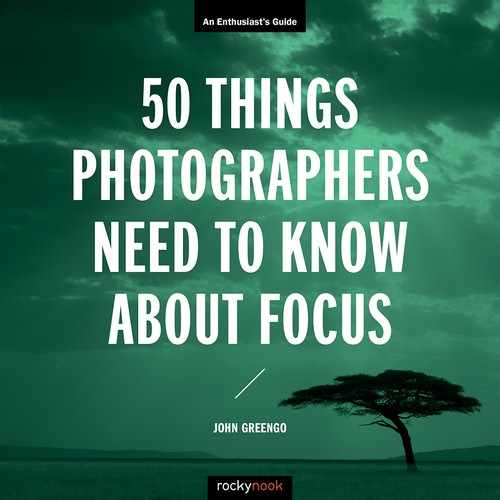15. LIVE VIEW FOCUSING
![]()
WHEN DSLRS ENTER Live View mode, the focus system is completely different than when the camera is in the standard viewing mode (Figure 15.1). As explained in the chapter on phase detection (section 12), the DSLR uses a separate and independent autofocus sensor to determine focus when the mirror is in the lowered position. When Live View is engaged on a DSLR, the mirror moves up and out of the way so that light may strike the sensor and the image can be relayed to the LCD on the back of the camera. This renders the phase detection sensor useless.
When in Live View, the DSLR can no longer make use of the separate autofocus sensor and must rely upon the image sensor for focus information. Many DSLRs use a simple contrast detection system (section 9) for focusing in Live View. As a result, focus can be quite slow, sometimes infuriatingly slow. It is not suitable for tracking fast action or even moderately fast-moving subjects in some cases. To be fair, this is not how the DSLR was intended to be used.
Live View is a valuable tool for checking composition in more static scenes. With subjects that move quickly, using Live View for focusing in most DSLRs is not recommenced. While Live View focusing is slow, it is very accurate. For this reason, it can be an excellent tool for working from a tripod with a stationary subject. Using focus aids like magnification (section 32) or peaking (section 33) may also help.
Many DSLRs will offer special focus options in Live View that are not available elsewhere. Most frequently, there will be an option for subject tracking or face tracking. These intelligent modes are made possible due to the high-resolution sensor that is also being used for gathering focus data. An important note with these options is that while they can be very accurate and quick for following a subject around the frame, the cameras are not quick in tracking subjects toward and away from the camera. For portrait photography or subjects that are not moving too quickly, it may be a great choice.
Some DSLRs may use hybrid systems (section 10) to improve the autofocus speed so that it can work with a wider range of subjects. While these hybrid systems are better than nothing, they are still far behind the capabilities of the standard phase detection sensor. For this reason, sports and action photography should be done by looking through the viewfinder and not with the LCD on the back of a DSLR camera.
15.1 Standard DSLR viewing operates with the main mirror in the lowered position. When the DSLR has Live View activated, the main mirror is raised to allow light to hit the image sensor. When the mirror is in the raised position (Live View) the phase detection AF sensor cannot collect any data, so focusing information must be collected using data from the image sensor.

